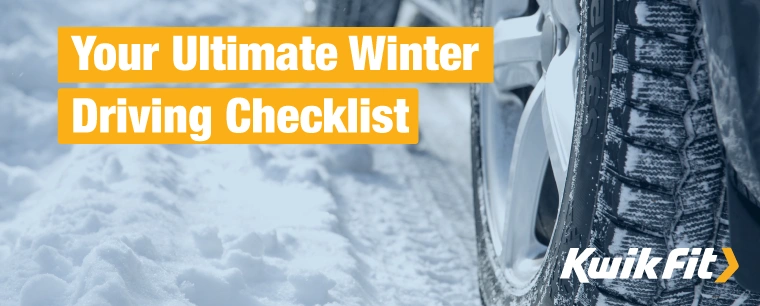Everything You Need to Know About Parallel Parking
Jack Dreyer | Tuesday 1st August 2023 11:00am

For those new to driving, and even the most experienced of manoeuvres, parallel parking can be a source of anxiety at the best of times.
Perhaps one of the most complicated manoeuvres, parallel parking involves a lot of hand-eye coordination, judgement, and vehicle control. So, we’d forgive anyone who was hesitant with this type of parking — we’re with you on preferring bay parking or pulling in forwards.
With this handy guide, we hope that you’re able to gain some confidence when it comes to parking on the street, never having to reluctantly drive past a primely- located parking spot out of fear of parallel parking again.
Use the contents here to navigate to the most relevant sections of this guide for you:
What is parallel parking?
As the name would suggest, parallel parking refers to the practice of parking your car parallel to the road or curb. Often, this involves fitting your car into a line of other vehicles parked on the street in an available space by lining it up next to the cars and reversing it in with a series of steering wheel turns and mirror checks.
Generally speaking, this is one of the more complicated manoeuvres that drivers have to get their heads around, requiring a fair bit of navigating. However, once you’ve got the steps dialled in, inner city parking and on-street parking will feel like a breeze.
When should you parallel park?
Being able to parallel park is a very useful skill to have under your belt indeed.
One of its main benefits is that, by reversing in, you can fit your vehicle into much smaller spaces than you would otherwise be able to, reducing your reliance on finding car parks or ‘easier’ spots.
Usually, whenever there is on-street parking, there will be the opportunity to parallel park, most commonly in built-up areas like city centres or residential streets.

How do you parallel park?
As with most driving manoeuvres, there is no one right way to parallel park. That being said, when most learners are being taught to parallel park, the common method known as 1-2-1 is often used to make it easier.
This refers to the way the steering wheel is turned in order to perfect the manoeuvre, that is: one turn to the left, two turns to the right, and then one final turn to the left. We’ll get into the nitty gritty in a minute, but first let’s work through finding a spot, lining up, and signalling to other road users that you are intending to park.
Note: in this example, we’ll be parking on the left-hand side of the road in a line of cars facing in the same direction as us.
Positioning
1.) Find a space, signal, and stop
Once you’ve found a good space, you’ll want to signal to any road users around you that you’ll be slowing down and conducting a manoeuvre. So, indicate left and slowly brake until you’ve stopped next to the space.
At this point, it’s a good idea to do a quick visual check that your car will definitely fit with enough space so that a pedestrian can walk between your car and the cars in front and behind (so, about two feet).
2.) Align your vehicle
Slowly pull forward slightly so that your vehicle is in line with the car you are going to be parking behind. If you’d like specifics, try lining up the middle of your passenger side door with the front bumper of the car in front.
It’s important not to pull too far forward or sit too far backwards, here, as the whole process will be all out of line.
3.) Checks and reversing
Once you’re in position, check your mirrors (side and rear-view) and begin reversing. Remember, if you’re parallel parking, the chances are that you’re in an inner city area where there are lots of pedestrians and potential hazards such as cyclists. It’s fine to take your time here.
As you reverse, be sure to look over your left shoulder through the rear window. Reverse until your back wheels are roughly aligned with the back bumper of the car to the left of you.

Turning manoeuvres (1-2-1)
4.) Full turn to the left
This is the first part of the 1-2-1 manoeuvre and requires you to make a full turn to the left so that your car begins to turn towards the curb and into the empty space you want to park in.
After you’ve turned, check for any potential hazards again (mirrors, blind spots, and all), including any traffic coming in the opposite direction and you will swing out into the road a little when you start to move. Now, you can reverse until you see the kerb in your left wing mirror.
5.) Two turns to the right
Now, stop and turn your steering wheel to the right twice. This will put it into full lock. The idea here is to bring the front of the car in line with the car in front of you, nestling the vehicle into the space and tightening into the curb. When the car eventually draws level to the curb, then stops.
6.) One final turn to the left
Now, to get centred and straight, turn the wheel one final time to the left. This will bring the wheels (currently facing out to the right) in line with the rest of the car, facing straight forward. After this, you may well want to make a few adjustments, pulling forwards or backwards as needed.
Parallel parking on your driving test
Parallel parking, as of 2017, is a potential manoeuvre that may come up on your driving test. In the UK, when you take your driving test, you will be asked to perform one of the following manoeuvres:
- Parallel parking
- A forward bay park
- A reverse bay park
- Pulling up on the right and reversing back for 2 car lengths
If you cannot complete the manoeuvre on your test, don’t panic. This isn’t an automatic fail. If your observations are thorough, you keep safe, and you maintain control of the car, you may just gain a fault. You can always retry the manoeuvre.
Best practices for parallel parking
- Take your time. Trying to rush this manoeuvre may lead you to make mistakes, misjudge distances or reference points, and completely throw you off.
- Don’t worry about people waiting. For learners especially, it can seem stressful to perform a manoeuvre when other road users are waiting for you. Try to remain calm and focus on what you are doing instead of just swinging it in to allow other cars to get by. Everyone understands the struggles of parallel parking.
- Try not to fixate on any one point of view for too long. Try switching up checks between mirrors and out of the window too.
Want more motoring advice?
If you’re after regular motoring advice, be sure to keep up with the Kwik Fit blog. Or, in the meantime, if you have any questions about the condition of your vehicle and its parts, you can always get in touch with the experts at your local Kwik Fit centre.
Any facts, figures and prices shown in our blog articles are correct at time of publication.
Featured Articles
Is Your Car Battery Ready for Winter?
Monday 11th November 2024
Is the UK on the verge of ‘the coldest winter for 50 years?’ Even if El Niño doesn't hit the UK this winter, reduce the risk of a winter breakdown by making sure your car battery is winter-ready.
Your Ultimate Winter Driving Checklist
Monday 31st October 2022
Driving in the colder months presents many challenges. Breakdowns are far more common in winter, so make sure you’re prepared with these essentials.
How to Get Your Car Ready for Winter
Wednesday 28th September 2022
Winter can be a harsh season for your car but planning ahead by carrying out some basic maintenance and packing some essential kit should help you avoid a winter breakdown.







